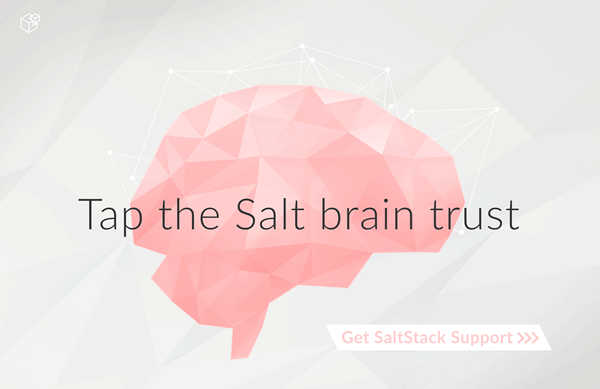Modular Systems¶
When first working with Salt, it is not always clear where all of the modular components are and what they do. Salt comes loaded with more modular systems than many users are aware of, making Salt very easy to extend in many places.
The most commonly used modular systems are execution modules and states. But the modular systems extend well beyond the more easily exposed components and are often added to Salt to make the complete system more flexible.
Execution Modules¶
Execution modules make up the core of the functionality used by Salt to interact with client systems. The execution modules create the core system management library used by all Salt systems, including states, which interact with minion systems.
Execution modules are completely open ended in their execution. They can be used to do anything required on a minion, from installing packages to detecting information about the system. The only restraint in execution modules is that the defined functions always return a JSON serializable object.
For a list of all built in execution modules, click here
For information on writing execution modules, see this page.
Interactive Debugging¶
Sometimes debugging with print() and extra logs sprinkled everywhere is not
the best strategy.
IPython is a helpful debug tool that has an interactive python environment which can be embedded in python programs.
First the system will require IPython to be installed.
# Debian
apt-get install ipython
# Arch Linux
pacman -Syu ipython2
# RHEL/CentOS (via EPEL)
yum install python-ipython
Now, in the troubling python module, add the following line at a location where the debugger should be started:
test = 'test123'
import IPython; IPython.embed_kernel()
After running a Salt command that hits that line, the following will show up in the log file:
[CRITICAL] To connect another client to this kernel, use:
[IPKernelApp] --existing kernel-31271.json
Now on the system that invoked embed_kernel, run the following command from
a shell:
# NOTE: use ipython2 instead of ipython for Arch Linux
ipython console --existing
This provides a console that has access to all the vars and functions, and even supports tab-completion.
print(test)
test123
To exit IPython and continue running Salt, press Ctrl-d to logout.
State Modules¶
State modules are used to define the state interfaces used by Salt States. These modules are restrictive in that they must follow a number of rules to function properly.
Note
State modules define the available routines in sls files. If calling an execution module directly is desired, take a look at the module state.
Auth¶
The auth module system allows for external authentication routines to be easily
added into Salt. The auth function needs to be implemented to satisfy the
requirements of an auth module. Use the pam module as an example.
Fileserver¶
The fileserver module system is used to create fileserver backends used by the
Salt Master. These modules need to implement the functions used in the
fileserver subsystem. Use the gitfs module as an example.
Grains¶
Grain modules define extra routines to populate grains data. All defined public functions will be executed and MUST return a Python dict object. The dict keys will be added to the grains made available to the minion.
Output¶
The output modules supply the outputter system with routines to display data
in the terminal. These modules are very simple and only require the output
function to execute. The default system outputter is the nested module.
Pillar¶
Used to define optional external pillar systems. The pillar generated via the filesystem pillar is passed into external pillars. This is commonly used as a bridge to database data for pillar, but is also the backend to the libvirt state used to generate and sign libvirt certificates on the fly.
Renderers¶
Renderers are the system used to render sls files into salt highdata for the
state compiler. They can be as simple as the py renderer and as complex as
stateconf and pydsl.
Returners¶
Returners are used to send data from minions to external sources, commonly
databases. A full returner will implement all routines to be supported as an
external job cache. Use the redis returner as an example.
Runners¶
Runners are purely master-side execution sequences. These range from simple reporting to orchestration engines like the overstate.
Tops¶
Tops modules are used to convert external data sources into top file data for the state system.
Wheel¶
The wheel system is used to manage master side management routines. These routines are primarily intended for the API to enable master configuration.


